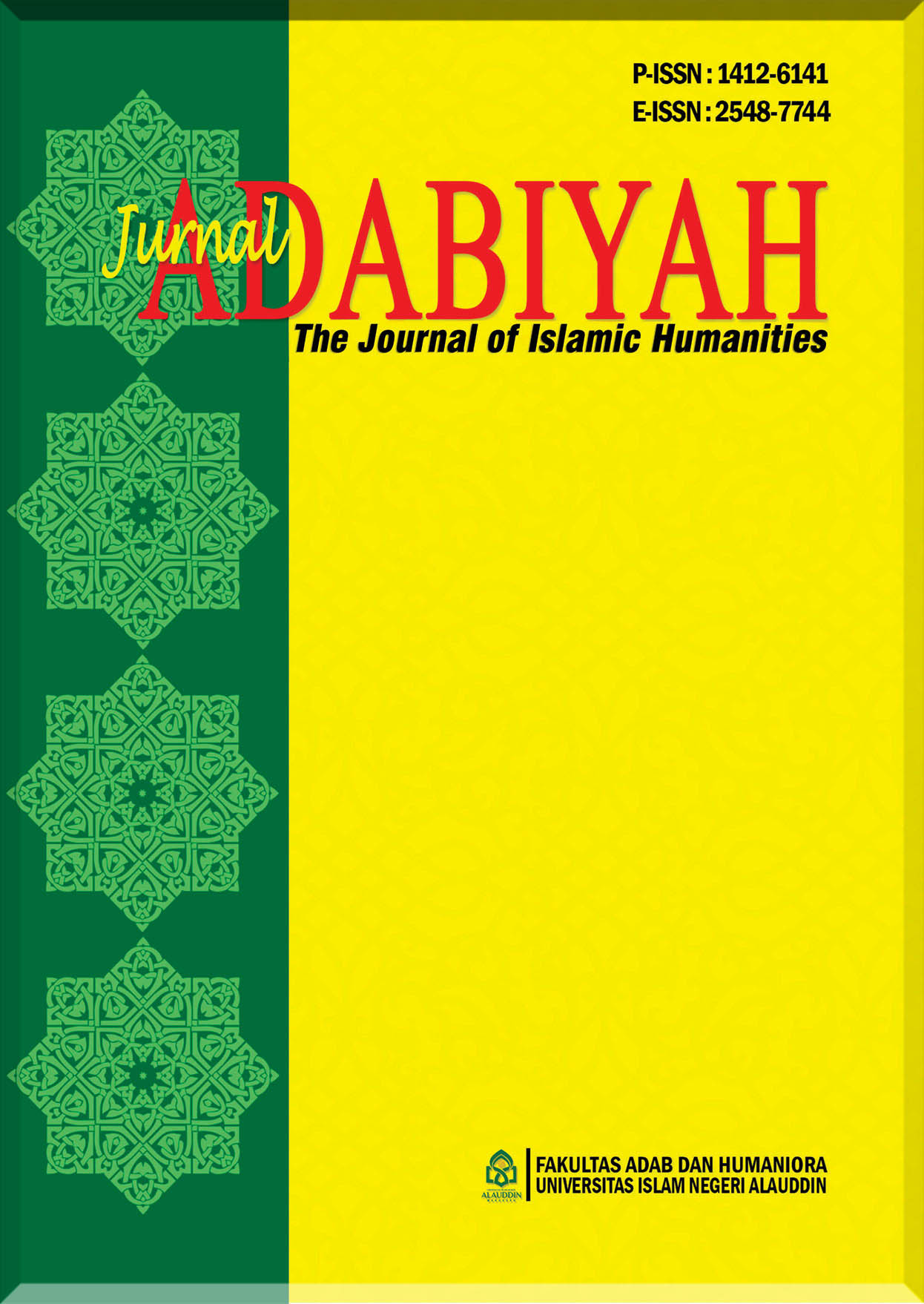MISTISISME PEREMPUAN DALAM DIWAN TARJUMAN AL-ASYWAQ KARYA IBNU ARABI
Main Article Content
Abstract
Diwan Tarjuman al-Asywaq is one of the master piece of Ibnu Arabi as known the famous sufic mystic in Islam. A poetry in Diwan Tarjuman al-Asywaq appears controversy in Islam world because this poetry is considered to show the love story of Ibnu Arabi with the girl whom he loves. This study will present meaning of metaphor and symbol in this poetry with hermeneutic analysis of Paul Ricoeur. Hermeneutic Ricoeur will explain objectively meaning in this poetry (sense) and then put this meaning in the real life (reference). The result finds that idea of “little girl” in this poetry is interpretation of “Allah” who has nobleness, purity, beautification, and the high place. “Allah” with his perfection is presented through form of “woman” as formal form in interpretation of “Allah”.
Downloads
Article Details
COPYRIGHT AND LICENSE STATEMENT
COPYRIGHT
Jurnal Adabiyah is published under the terms of the Creative Commons Attribution license. Authors hold the copyright and retain publishing rights without restriction to their work. Users may read, download, copy, distribute, and print the work in any medium, provided the original work is properly cited.
LICENSE TO PUBLISH
1. License
The use of the article will be governed by the Creative Commons Attribution license as currently displayed on http://creativecommons.org/licenses/by/4.0.
2. Author’s Warranties
The author warrants that the article is original, written by stated author/s, has not been published before, contains no unlawful statements, does not infringe the rights of others, is subject to copyright that is vested exclusively in the author and free of any third party rights, and that any necessary written permissions to quote from other sources have been obtained by the author(s).
3. User Rights
Under the Creative Commons Attribution license, the users are free to download, reuse, reprint, modify, distribute and/or copy the content for any purpose, even commercially, as long as the original authors and source are cited. No permission is required from the authors or the publishers.
4. Co-Authorship
If the article was prepared jointly with other authors, the corresponding author warrants that he/she has been authorized by all co-authors, and agrees to inform his/her co-authors of the terms of this statement.
5. Miscellaneous
Jurnal Adabiyah may conform the article to a style of punctuation, spelling, capitalization, and usage that it deems appropriate. The author acknowledges that the article may be published so that it will be publicly accessible and such access will be free of charge for the readers.
References
-------. Diwan Tarjuman al-Asywaq. Beirut: Darul Ma’arif. 2005.
Ahmala dkk. Hermeneutika Transendental: Dari Konfigurasi Filosofis Menuju Praksis Islamic Studies. Yogyakarta: IRCiSoD. 2003.
Bleicher, Josef. Hermeneutika Kontemporer: hermeneutika sebagai metode, filsafat dan kritik. Yogyakarta: Fajar Pustaka. 2007.
Hardiman, F. Budi. Melampaui Positivisme dan Modernitas Diskursus Filosofis tentang Metode Ilmiah dan Problem Modernitas. Yogyakarta: Kanisius. 2003.
-------. Seni Memahami: Hermeneutik dari Schleiermacher sampai Derrida. Yogyakarta: KANISIUS. 2016.
Kleden, Ignas. Simbolisme Cerita Pendek: epilog kumpulan cerpen pilihan Kompas. Jakarta: Kompas. 1997.
Ricoeur, Paul. Hermeneutika Ilmu Sosial. Yogyakarta: Kreasi Wacana. 2008.
Rosyidi, M. Ikhwan, dkk. Analisis Teks Sastra. Yogyakarta: GRAHA ILMU. 2013.
Suyitno. Sastra, Tata Nilai dan Eksegesis. Yogyakarta: Hanindita. 1986.

